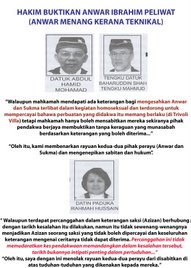 The ‘new year’ in Islam is marked in a way which perhaps no other nation or community marks their own ‘new year’. In fact most, if not all civilizations, take this as a time of happiness and joy in which the people party and celebrate, committing sins most of the time. However in Islam, and particularly the school of the Ahlul Bayt, the new year is one which begins with grief and sorrow and a call to stamp out corruption, evil and sin – not to indulge in it! It is a time in which we not only call for the eradication of all forms of outward tyranny by whoever is enacting it over ANY oppressed individuals, but it is also a time to purge the inner tyranny which our own lower passions and desires pull us towards.
The ‘new year’ in Islam is marked in a way which perhaps no other nation or community marks their own ‘new year’. In fact most, if not all civilizations, take this as a time of happiness and joy in which the people party and celebrate, committing sins most of the time. However in Islam, and particularly the school of the Ahlul Bayt, the new year is one which begins with grief and sorrow and a call to stamp out corruption, evil and sin – not to indulge in it! It is a time in which we not only call for the eradication of all forms of outward tyranny by whoever is enacting it over ANY oppressed individuals, but it is also a time to purge the inner tyranny which our own lower passions and desires pull us towards. This belief is best seen in the beautiful supplication which the Prophet used to recite when he saw the new moon of Muharram, a portion of which reads: “O’ Allah! You are the Pre-Existing Lord and this is a new year so then in this (new year), I ask you for protection from the Satan and strength against this lower soul which pulls towards evil and that you make me busy with that which makes me closer to You, O’ the Noble … O’ our Lord! Do not divert our hearts after You have guided us and grant us, from Yourself, mercy. Surely You are The Granter.”
This Muharram, if anything, we need to keep the movement of Abi Abdillah in mind and heart and make a conscious decision to make a change in our lives and work towards a reformation within our own hearts and beliefs. Islam is in no need for reform – there is no ‘trouble with Islam’ as some ‘enlightened’ people will have us believe. Rather, it is the followers who need to heed the lesson learnt through Kerbala and the victory of truth over falsehood – and apply it to our lives and reform ourselves.The Hijrah
Muslims do not traditionally "celebrate" the beginning of a new year, but we do acknowledge the passing of time, and take time to reflect on our own mortality.
Muslims measure the passage of time using the Islamic (Hijrah) calendar. This calendar has twelve lunar months, the beginnings and endings of which are determined by the sighting of the crescent moon. Years are counted since the Hijrah, which is when the Prophet Muhammad migrated from Mecca to Madinah (approximately July 622 A.D.).
The Islamic calendar was first introduced by the close companion of the Prophet, 'Umar ibn Al-Khattab. During his leadership of the Muslim community, in approximately 638 A.D., he consulted with his advisors in order to come to a decision regarding the various dating systems used at that time. It was agreed that the most appropriate reference point for the Islamic calendar was the Hijrah, since it was an important turning point for the Muslim community. After the emigration to Madinah (formerly known as Yathrib), the Muslims were able to organize and establish the first real Muslim "community," with social, political, and economic independence. Life in Madinah allowed the Muslim community to mature and strengthen, and the people developed an entire society based on Islamic principles.
The Islamic calendar is the official calendar in many Muslim countries, especially Saudi Arabia. Other Muslim countries use the Gregorian calendar for civil purposes and only turn to the Islamic calendar for religious purposes. The Islamic year has twelve months that are based on a lunar cycle. Allah says in the Qur'an:"The number of months in the sight of Allah is twelve (in a year) - so ordained by Him the day He created the heavens and the earth...." (9:36).
"It is He Who made the sun to be a shining glory, and the moon to be a light of beauty, and measured out stages for it, that you might know the number of years and the count of time. Allah did not create this except in truth and righteousness. And He explains His signs in detail, for those who understand" (10:5).
And in his final sermon before his death, the Prophet Muhammad said, among other things, "With Allah the months are twelve; four of them are holy; three of these are successive and one occurs singly between the months of Jumaada and Sha'ban."
Islamic months begin at sunset of the first day, the day when the lunar crescent is visually sighted. The lunar year is approximately 354 days long, so the months rotate backward through the seasons and are not fixed to the Gregorian calendar. The months of the Islamic year are:
1. Muharram
2. Safar
3. Rabia Awal
4. Rabia Thani
5. Jumaada Awal
6. Jumaada Thani
7. Rajab
8. Sha'ban
9. Ramadan
10. Shawwal
11. Dhul-Qi'dah
12. Dhul-Hijjah













 Malaysian Ringgit Converter
Malaysian Ringgit Converter
























No comments:
Post a Comment